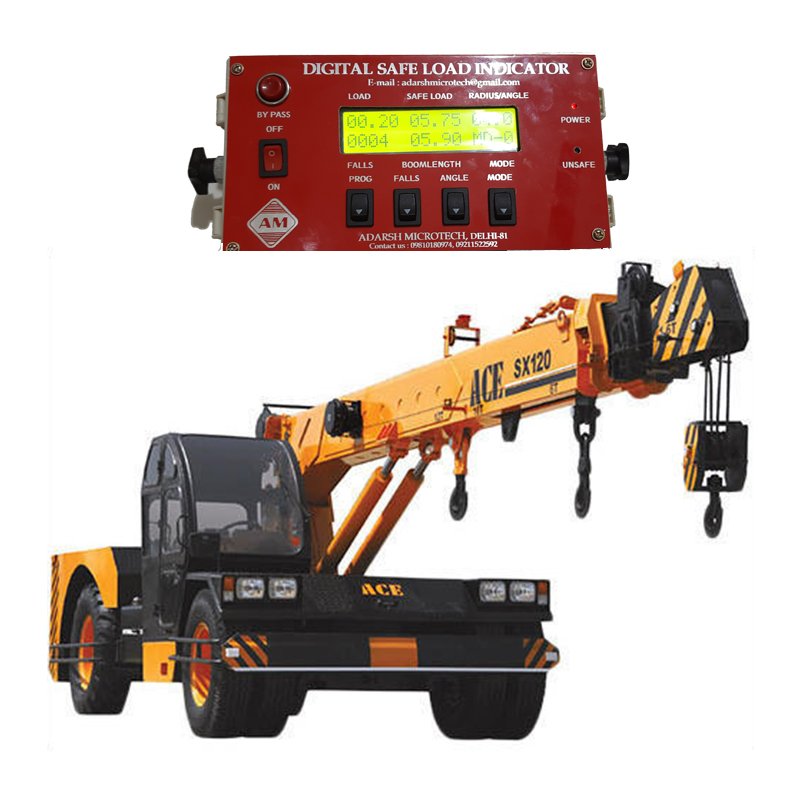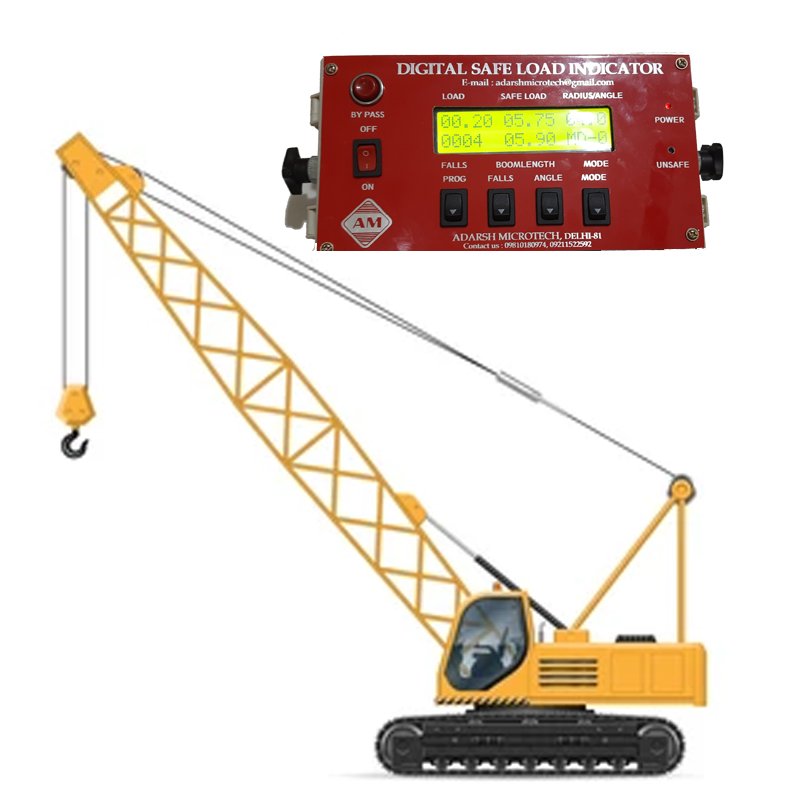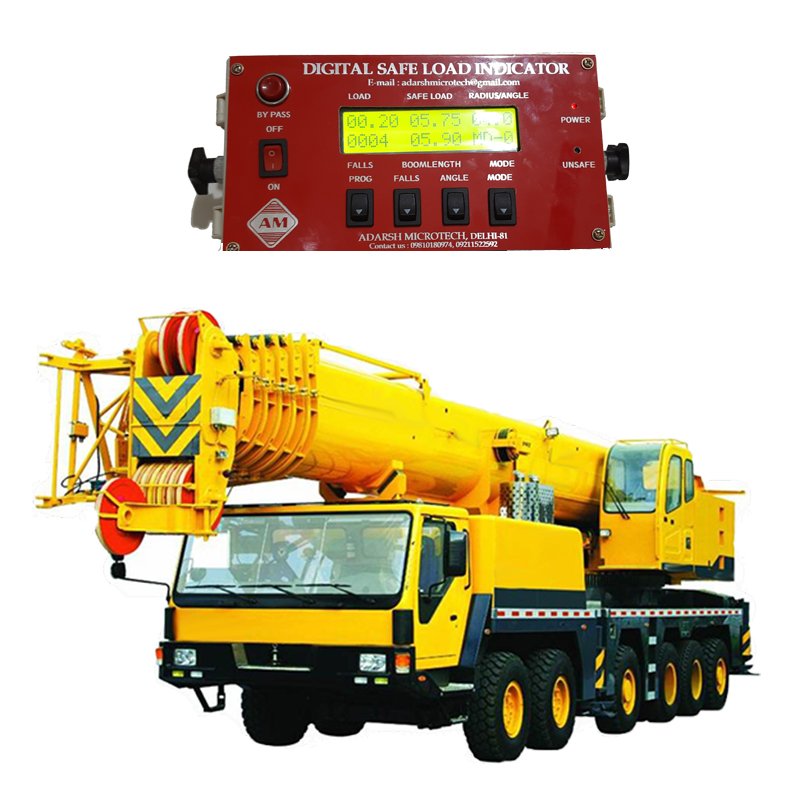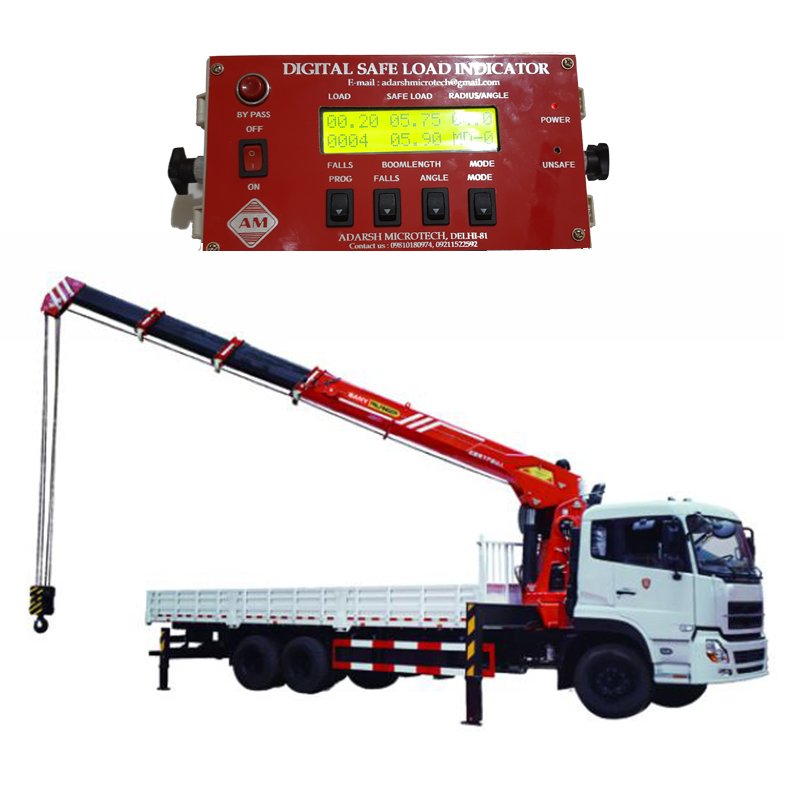Crane Safe Load Indicators For All Cranes- Adarsh Microtech
A Crane Safe Load Indicator (SLI) is a device installed in many cranes to check and alert crane operator whenever the lift exceeds safe operating range, preventing overload accidents by displaying real-time load data. Adarsh Microtech, a leading manufacturer, specializes in state-of-the-art Digital Safe Load Crane Indicators, setting industry standards with precision, reliability, and innovative technology, ensuring safer crane operations. Cranes are essential equipment used in various industries, such as construction, shipping, and logistics. They are used to lift heavy materials and equipment, and as such, they are often prone to accidents and mishaps. To ensure the safe operation of cranes, it is vital to have a Safe Load Indicator (SLI) installed. In this page we will explore the importance of Safe Load Indicators and how they enhance crane safety load.
Key Functions of Crane Safe Load Indicators
- Load Monitoring: Accurately track weight distribution and capacity utilization in real-time.
- Boom Angle Analysis: Ensure optimal stability and prevent dangerous over-extension.
- Ground Pressure Assessment: Minimize the risk of uneven terrain compromising crane stability.
- Customizable Alerts: Set precise parameters for visual and audible warnings, preventing critical safety breaches.
- Calibration: We calibrate our SLIs with military precision, ensuring every weight measurement and load moment calculation hits the bullseye.
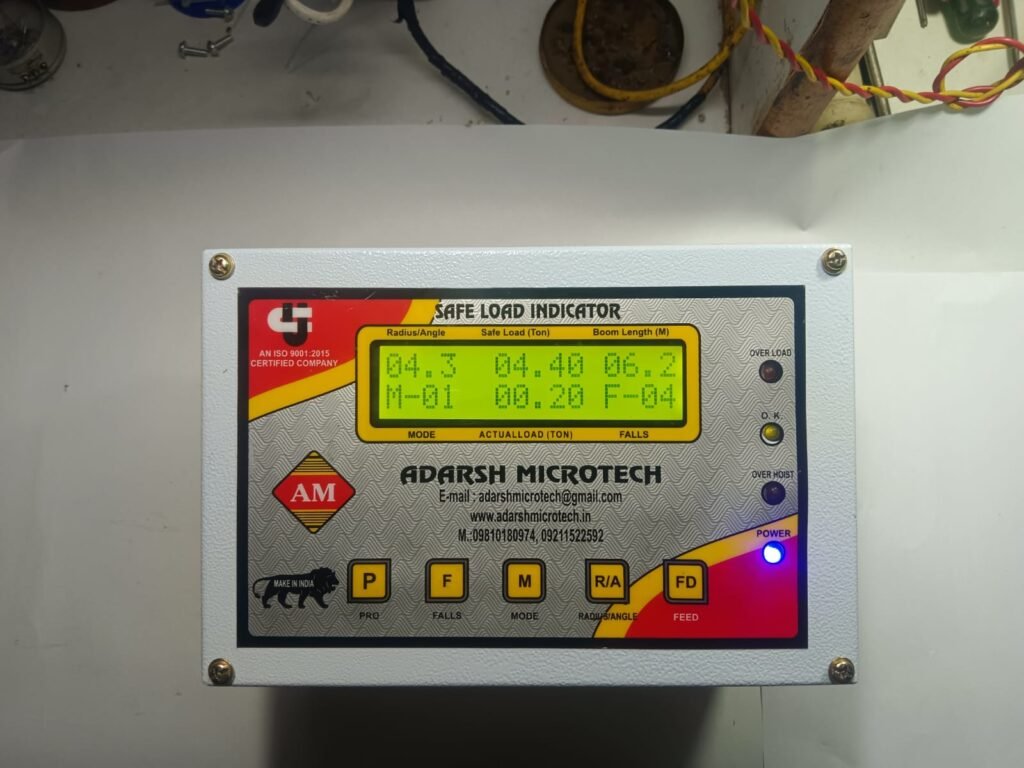
The Benefits of Crane SLI
In today’s competitive landscape, operational excellence isn’t just desirable, it’s essential. Our SLIs provide a tangible edge by:
- Minimizing downtime and project delays: Avoid costly accidents and near misses with proactive safety measures.
- Optimizing crane utilization: Maximize lifting capacity with precise data-driven insights.
- User Friendly: Foster a culture of safety and empower operators to make informed decisions and easy to use.
- Commitment to excellence: Differentiate your brand through unwavering dedication to safety and operational efficiency.
- Prevention of equipment damage: The use of SLIs can help prevent equipment damage that can result from lifting loads that are too heavy.
- Cost savings: Using crane SLIs can help companies save money by preventing accidents and equipment damage that can be costly to repair.
Different Crane Safe Load Indicator for Different Safety Load
There are several types of crane Safe Load Indicators available on the market. The most common types of crane SLI systems we have are:
- Automatic Safe Load Indicator for Hydra Crane
- Automatic Safe Load Indicator for Crawler Crane
- Automatic Safe Load Indicator for Hydraulic Crane
- Automatic Safe Load Indicator for Truck Mounted Crane
Why Choose Adarsh Microtech?
our Crane Safe Load Indicators are not just tools; they’re guardians of your business. They keep accidents at bay, ensure efficiency, and are your ticket to hassle-free operations. When you choose us, you’re not just getting equipment; you’re getting a safety squad dedicated to elevating your crane game.
- Safety Obsessed: We’re safety freaks (in a good way). Our Crane SLIs don’t just meet safety standards; they exceed them. Your lifting operations are in good hands – literally.
- Tailor-Made Solutions: We get it; one size doesn’t fit all. That’s why our SLIs are customizable. Your crane, your rules – we adapt.
- User-Friendly Excellence: No one likes complicated gadgets. Our SLIs boast a user-friendly interface. Simple, clear, and operators will be masters in no time.
- Support Galore: Picking us means gaining a partner. Our support and training are top-notch – we’ve got your back.
- Experience Matters: We’ve been crafting these safety marvels for years, and we know a thing or two about keeping your lifts safe.

